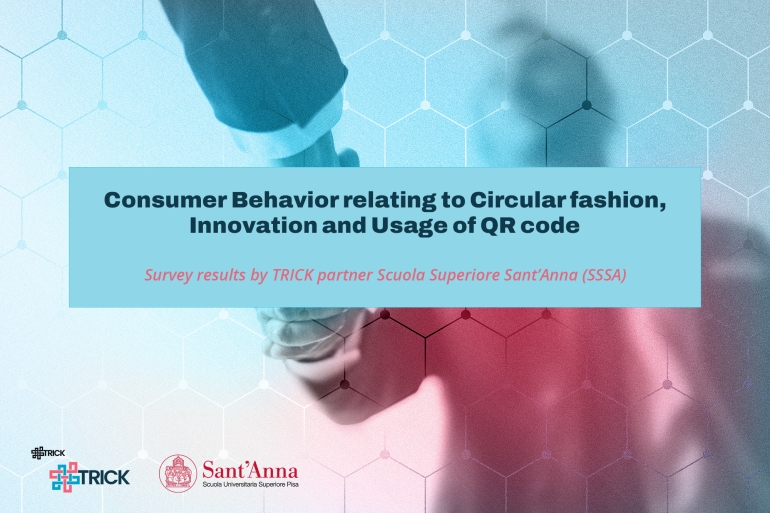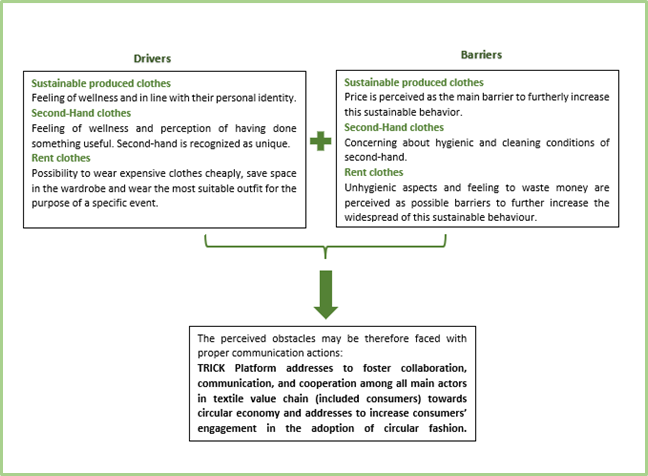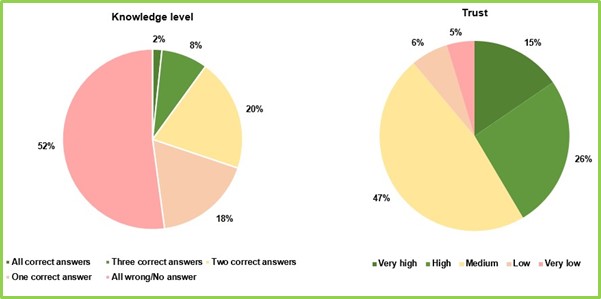Consumer Behavior relating to Circular fashion, Innovation and Usage of QR code

Image Credits: Sqetch
Scuola Superiore Sant’Anna (SSSA), a public university institute -with special autonomy-based in Pisa, thanks to its expertise in circular economy and consumer behaviour of the Laboratory on Sustainability Management (SuM), has carried out a survey for the TRICK project about Consumer Behavior relating to Circular fashion, Innovation and Usage of QR code and Blockchain. The choice of this topic is based on the core of the TRICK project itself which regards the adoption, the tracing and the demonstration of sustainable approaches based on Blockchain, capable of providing all data needed to implement end-of-waste practices and aware purchasing choices for the main stakeholders of the textile value chain, including final consumers.
Based on this, in order to gather further information for the TRICK vision definition, for consumer needs behaviours, barriers and expectations SSSA has developed a survey. This survey has been administered from the end of December 2021 to the first half of January 2022 in five countries within the European Union that represent some of the biggest markets in the European Union, namely France, Germany, Italy, Spain, and Poland. As a result, it led to the analysis of 5124 usable questionnaires.
The questionnaire has been composed of different items regarding:
- Awareness and involvement;
- Purchasing and consumption behaviours;
- Use and after-use behaviours;
- Trust in information;
- Driver to use the QR-code;
- Intention to use the QR-code;
- Attitude toward blockchain technology;
- Tensions between conflicting objectives
Considering circular & sustainable purchasing and consumption predisposition, an interesting picture emerges: a new consumer path has begun, but it needs to be further supported.
The results in the five countries are enough homogenous and it appears that the majority of the respondents (around 75%) are aware of the environmental and social negative impacts linked to the current linear model of fashion production and consumption and recognize the importance of the adoption of certain sustainable behaviours (such as the importance of disposing of end-of-life clothing properly, of extending product life by choosing long-lasting clothes or by giving a new function to those that are no longer used, of buying clothing made from recycled materials) in order to influence sustainability issues in the fashion industry.
Despite this high level of sustainability awareness, European consumers still state that economic factors along with product features deeply affect their purchase and consumption decisions related to clothes.
In particular, considering the motivations/barriers that may influence the purchase/use of sustainable and sustainably produced garments, an aggregate level summary of the results is presented below:

Figure 1 Drivers and barriers regarding the use of sustainable and sustainably produced garments.
Image Credits: SSSA
The results also highlight the key role of properly shared information that the TRICK platform may promote to ensure transparency and traceability throughout the entire value chain. In fact, about half of the respondents at the aggregate level feel more reassured if a piece of clothing offers additional information.
Considering behaviours and beliefs about QR-code and blockchain technologies, the main emerging findings highlight that both technologies may actually contribute to fostering the circular transition of the fashion sector if they will be properly exploited.
If in the future, the propensity to scan a QR-code related to a circular cloth emerges to be very high among European consumers, then there is still work to do, in order to nourish their trust in blockchain technology (see Figure below).

Figure 2 Knowledge of blockchain technology (on the left side) and trust toward this technology (on the right side) (total of respondents are considered in the aggregated way) - Image Credits: SSSA
European consumers show limited knowledge of what this technology is and express a moderate trust in this new technology and its corresponding benefits. Trust towards a new technology needs to be properly supported by the learning process of what it really is (i.e., its main characteristics and benefits) and by providing, at the same time, the opportunity to interact with it in daily routines to learn first hand about its real benefits.
In reference to this, the TRICK project plays a central role and a big opportunity in contributing to facing this potential barrier in order to enable the effective development of innovative and circular textile value chains.
CONTACT PERSON & EMAIL ADDRESS:
LINKS:
- Consumer Behavior relating to Circular Fashion Innovation and Usage of QR Code (article)